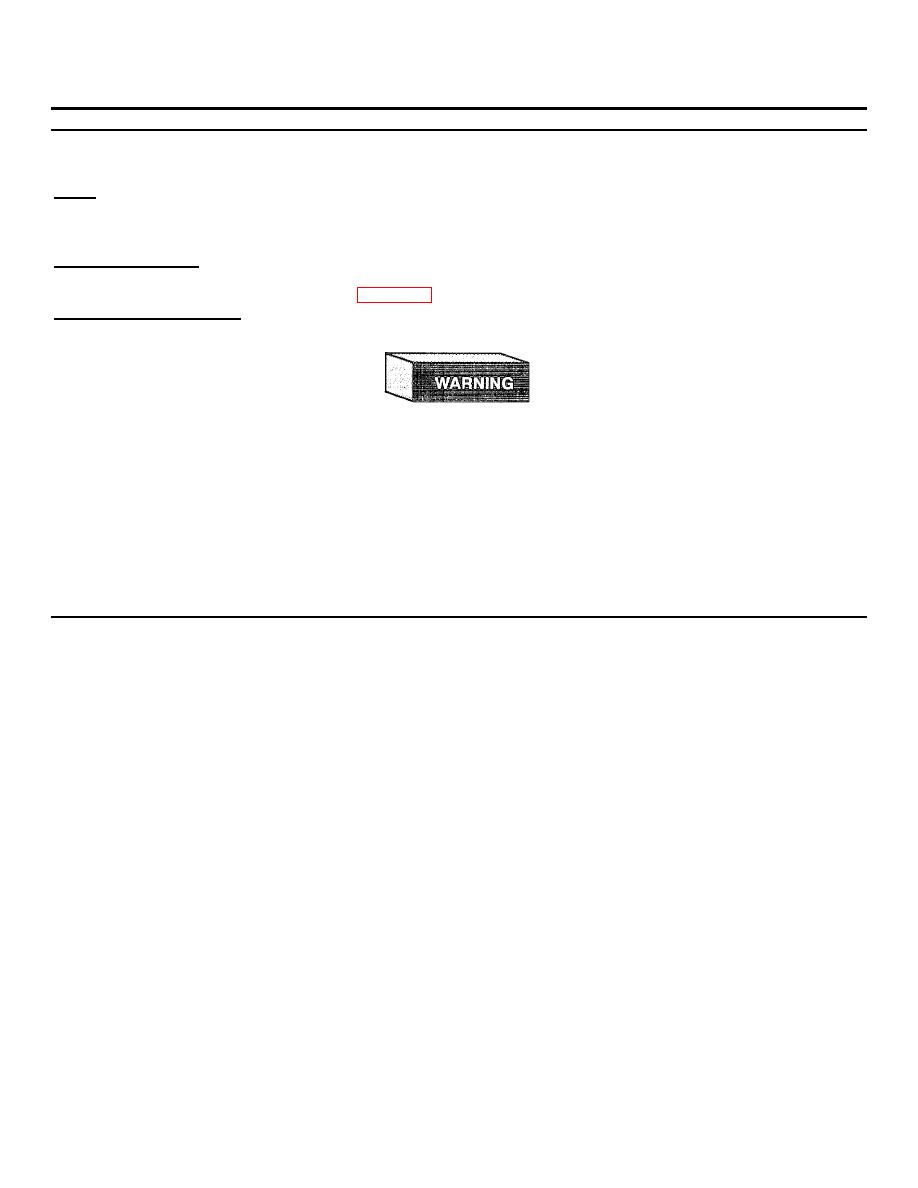
TM 9-4120-395-14&P
5-11. REFRIGERATION PRESSURE CHECK
This task covers:
Service
INITIAL SETUP:
Tools:
Tool kit, service, refrigeration unit
Rubber gloves
Safety goggles
Equipment Condition:
Power off at power source.
Both front door assemblies removed. See para 4-17.
General Safety Instructions:
HIGH VOLTAGE is used in the operation of this equipment. DEATH ON CONTACT or
severe injury may result if personnel fail to observe safety precautions.
Death or serious injury may result if personnel fail to observe safety precautions. Use
great care to avoid contact with liquid refrigerant gas being discharged under pressure.
Sudden and irreversible tissue damage can result from freezing. Wear thermal
protective gloves and a face protector or goggles in any situation where skin/eye contact
is possible. Prevent contact of refrigerant gas with flame or hot surfaces. Heat causes
the refrigerant to break down and form carbonyl chloride (phosgene), a highly poisonous
and corrosive gas.
NOTE
Except in cases where it is obvious that the refrigerant charge has been lost, the first
step in troubleshooting problems in the refrigeration system should be to check
discharge and suction pressures under operating conditions.
a.
Turn the thermostat system switch to OFF.
b.
Remove valve stem and hose connection protective caps from service valves. Take care that valve stem caps
are not lost.
c.
Connect individual pressure gages, or a refrigeration charging manifold and hoses to the high (discharge) and
low (suction) service valves.
CAUTION
Take care that only a very small amount of refrigerant is allowed to escape during hose
d.
Loosen hose connections at gages or charging manifold.
e.
Open high (discharge) pressure service valve slightly to purge air from hose. Tighten high pressure hose
connection at gage fitting as soon as a hissing sound is heard. Repeat procedure with low (suction) pressure
service valve.
f.
Open the low (suction) and high (discharge) service valves.
5-17

